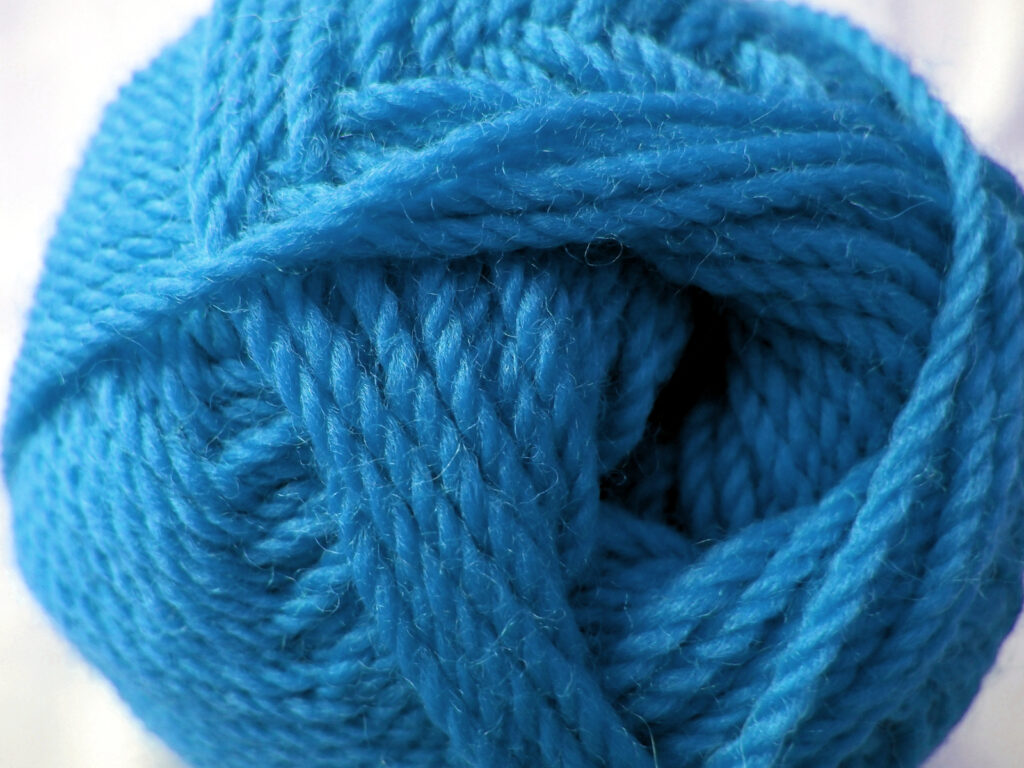Beginner knitters are often confused by the term “worsted” knitting yarn because it refers sometimes to weight and sometimes to the makeup of the yarn itself. If you have ever had problems discerning exactly what was meant by “worsted yarn” in one of your patterns, keep this article handy and you should be able to figure it out in short order by looking at a couple of key points about worsted knitting yarns. The first thing you have to figure out is whether it is the weight of the yarn or the type of the yarn being discussed in the pattern.
Worsted Weight Knitting Yarns
If you hear the term “Worsted Weight” when someone is referring to knitting yarn it is generally going to be a medium size yarn. The worsted weight knitting yarn will usually allow four to five stitches per inch. It is a very popular weight for making everything from afghans to sweaters to hats and mittens. The “worsted nature” of the yarn also makes it exceptionally easy for beginners and experienced knitters alike since it is generally very smooth and strong.
Worsted Spun Yarn (Also sometimes known as True or Pure Worsted Yarn)
Originally, worsted spun yarn only referred to wool yarn but the difference between the woolen yarn and the worsted yarn was in the actual preparation and spinning process of the yarn. The term itself comes from the English town of Worstead in Norfolk England. An influx of weavers, tailors and other textile workers in the 1200s made this one of the leading centers in the world for the production of textiles. The spinning process was first recognized there and that is where the term Worsted has its origins.
The preparation process is the first step in the production of worsted knitting yarn that separates it from the woolen yarns. When sheep were still shorn by hand, the process was actually easier and there are still some of the more expensive yarns that utilize this process but that is a different story. When the wool is shorn, the wool is all kept in the same direction meaning that the roots and the ends will all still be facing the same direction.
After this wool has been combed out, the short fibers (any fibers under three inches or about seven and one half centimeters) are removed so that only lengthy fibers remain. They are then combed out individually until they are flat and kept parallel to one another. When the worsted yarn is spun, the placement of the fibers all running in one direction keep the yarn thinner and having a tighter “braid” so that the finished worsted spun knitting yarn has much less space for air or anything else to get through it. This made the worsted spun yarn very popular for the creation of many knitted items.
The Worsted Knitting Yarn is not usually going to be as flexible as the woolen yarn due to the tighter braid. As such, the worsted knitting yarn is not always the best choice for garments that will be worn as an outermost layer and may need to be stretched over other clothes or otherwise require so it may not be the best choice for some items that do require more elasticity.
Today, you can easily purchase worsted yarn that is made from wool, cotton and even acrylic fibers. While the actual fiber base for the knitting yarn may be a bit different, the worsted spun knitting yarn will be a tighter bound yarn and as such, an excellent choice for many of your knitting creations. There is a very good reason that the worsted yarn remains one of the most popular among knitters of all ages and experience levels.

